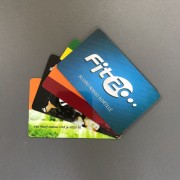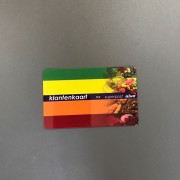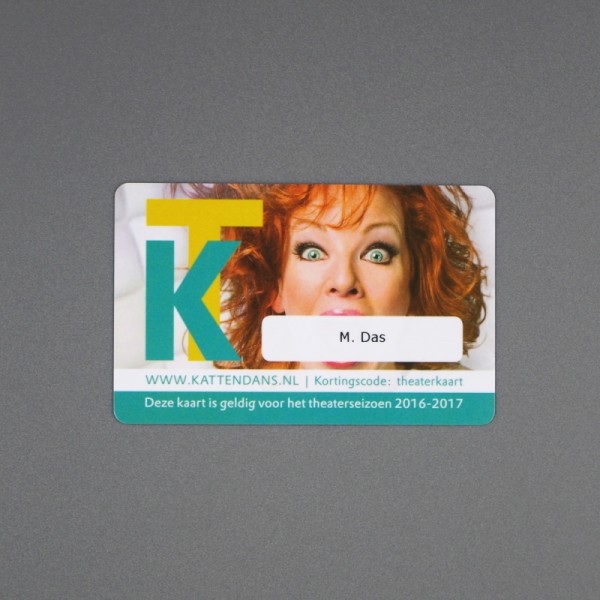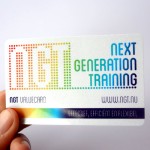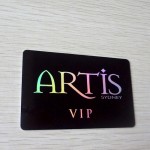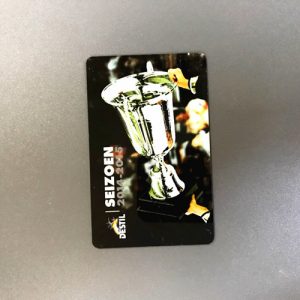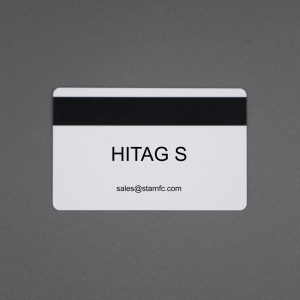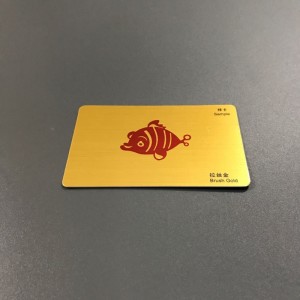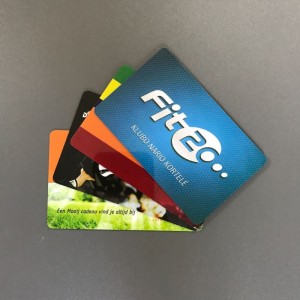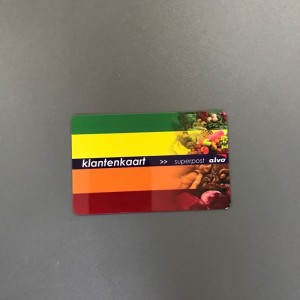13.56MHz RFID card
13.56MHz RFID card (high frequeny card) is a contactless smart card with credit card size dimensions 85.6×53.98mm ( ISO/IEC7810 to ISO/IEC 7816)
13.56MHz RFID cards as contactless smart cards are used for electronic transport ticketing, loyalty cards, electronic payment cards, parking , ID cards, NFC tag cards ect.
- Description
- Inquiry
13.56MHz RFID card (High frequency RFID card ) is a contactless smart card with credit card size dimensions 85.6×53.98mm ( ISO/IEC7810 to ISO/IEC 7816)
13.56MHz RFID cards as contactless smart cards are used for electronic transport ticketing, loyalty cards, electronic payment cards, parking , ID cards, NFC tag cards ect.
As a professional leader of HF RFID card manufacturer , STARNFC with more than 10 years printing experience and provides millions various 13.56MHz RFID cards every year to global market . We got good reputation from our customers in the world beacuse of good quality , zero defect on cards, promised delivery time as required of customers.
STARNFC offer kinds of HF 13.56MHz RFID card which according to HF standards including ISO14443, ISO15693 and ISO18092.
Chips Options:
– ISO14443A: MIFARE Classic MIFARE 1K, MIFARE 4K, MIFARE Ultralight , MIFARE DESFIRE (MIFARE DESFIRE EV1 2K,4K,8K),MIFARE Plus. These are very typical MIFARE RFID cards
– ISO14443B: SR176, SRI512, SRI1K, SRI2K, SRI4K, SRIX4K
– ISO18092: NTAG203 NTAG213,NTAG215,NTAG216, Topaz512 etc
– ISO15693: NXP I.CODE SLI, TI Tag it HF-I, ST LRI
-Material: PVC, PET, PET-G, ABS
-Glossy or Matt finished
-Housing: Lamination
-Size: 85.5×54.0mm
-Thickness: 0.84mm +-0.02mm
-ISO14443A,ISO14443B , ISO15693 and ISO18092 standard protocol
-Operating temperature: -20°С to +50°С (PVC material)
-Working Frequency :13.56KHz
-Reading Distance : 0-10cm
-Data storage time :10 years
Printing options:
-Offset Print full colour,
-Silkscreen print gold/silver colour
Personalization:
-Hole punching, Embossed, Hologram
-Hot-Stamping silver/gold,
-Magnetic stirp, LoCo 300oe, 650oe, HiCo 2750oe, 4000oe
-Thermal print number/barcode
-Inkjet print number/barcode
-UV inkjet print number/barcode
-Laser print number
-Scratch off
About ISO18092 protocol:
ISO/IEC 18092 (NFCIP-1 Near Field Communication – Interface and Protocol Specification), is dependant on ISO/IEC 14443 but includes a critical difference.
It utilizes different command protocol to change Part 4 of ISO 14443. What’s more, it includes two communication modes, active and passive, which enable
an NFC device to communicate with other NFC devices within a peer-to-peer mode and also with ISO/IEC 18092 based NFC tags (cards).
We are one of best NFC 13.56MHz suppliers (NFC is operating at 13.56mhz rfid ,so most of HF RFID chips especially mifare RFID chip linking mifare s50 (mifare 1k ),mifare desfire ev1, mifare ultralight are complying for NFC standard)
Inside the two modes of communication there are three modes of operation defined in ISO/IEC 18092:
Read/Write: In this mode, the NFC enabled phone can understand or write data to the supported tag types within a standard NFC data format Peer-to-Peer: Two NFC-enabled devices can exchange data over some form of custom binary protocol
Card-Emulation: While NFC-enabled phones can become a reader when in touch with tags, within this mode, the telephone can also act as a tag (contactless card)
for other readers (POS terminals)
Specifically, the NFC Forum states that in card emulation mode, NFC-enabled phones supports the contactless card EMV payment application requirements per EMV CCPS v2.
and embodied by American Express ExpressPay 2., MasterCard PayPass 2. and Visa payWave 2.1.1.
Therefore, in the event the NFC device operates underneath the specifications of ISO/IEC 18092 in card emulation mode, it must be interoperable with a reader/writer (POS terminal) that operates underneath the specifications of ISO/IEC 14443.
However, ISO/IEC 18092 also defines a peer-to-peer mode where two devices can exchange data (i.e. a card acting as a reader).
There’s no such current equivalent defined in ISO/ IEC 14443 and so these NFC devices couldn’t survive interoperable with devices operating under ISO/IEC 14443.
So, if you are planning to use in Peer-to-Peer mode, as an example, implementing your personal custom binary data exchange protocol over NFC, you might need to use ISO 18092 compliant device / chipset

